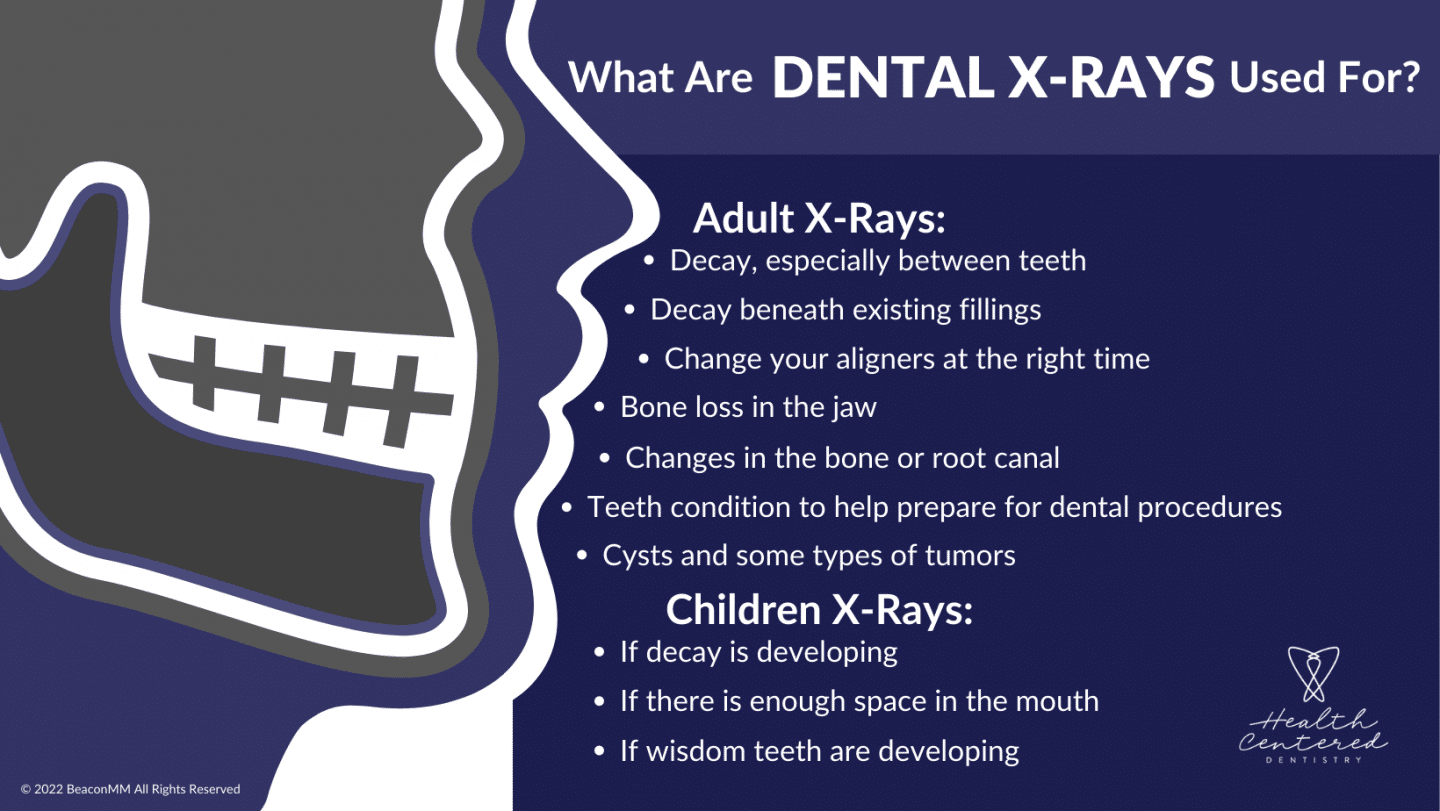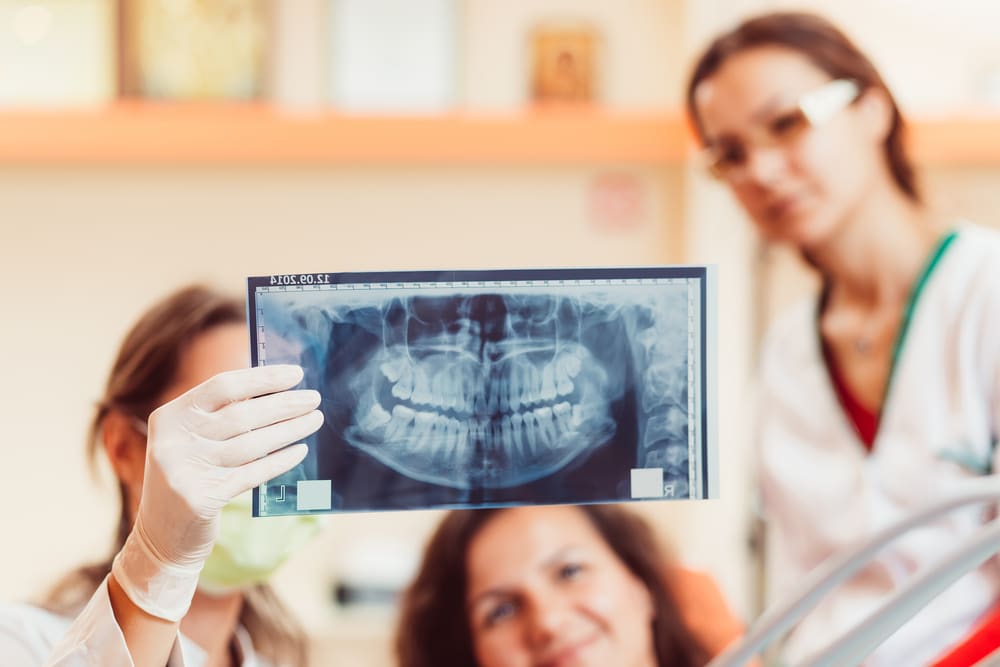Like our other patients, you may worry about some traditional dental practices due to the materials used or care techniques. Some people are turning to a holistic approach to their overall care, including their dental health. This adjustment can often include a well-rounded lifestyle change when trying to take a natural approach to your health.
During your journey, you’ve probably decided that how you receive your healthcare should align with the holistic approach you’ve decided to take. So, going to a holistic dentist such as Health Centered Dentistry can often match the services you’re looking for.
And with your holistic approach, you may wonder: are dental x-rays dangerous? Here’s a guide on the truth about radiation exposure, why we use this method for care, and what we can do to protect you.
Are you interested in what services we provide at Health Centered Dentistry? You can learn more here.
What Are Dental X-Rays Used for?

Many dentists will use dental x-rays during regular checkups. They can help dental providers by checking on your mouth’s health status. X-rays can help them see the condition of your teeth, roots, jaw placement, and facial bone composition.
These images are used to evaluate your mouth’s health, including possible cavities, bone level, and any anomalies. It can also help them find and treat dental problems early in their development. Since x-rays can give an exclusive insight into the status of your teeth, any early signs of oral health problems can be spotted and treated before severe damage is done to your mouth.
Adult X-Rays
Adult and child x-rays are used to spot different things. When dentists use x-rays for adults, they can help show the following:
- Decay, especially small areas of decay between teeth
- Decay beneath existing fillings
- Bone loss in the jaw
- Changes in the bone or root canal due to infection
- Condition and position of teeth to help prepare for tooth implants, braces, dentures, or other dental procedures
- Abscesses (an infection at the root of a tooth or between the gum and a tooth)
- Cysts and some types of tumors
Children X-Rays
These types of x-rays can help determine the health of the mouth and how the teeth may develop over time. Some things that the children’s dental x-rays show include:
- If decay is developing
- If there is enough space in the mouth to fit all incoming teeth
- If wisdom teeth are developing
- If teeth are impacted (unable to emerge through the gums)
Getting dental x-rays can help ensure the health of your teeth and mouth. It will help you get treated early on for possible dental problems and allow you to receive the best care.
Are Dental X-Rays Dangerous?
As time has gone on, people have been warier about being around radiation. And some medical practices use technology that gives off some radiation, including x-rays.
Although you may be tempted to avoid getting dental x-rays, they benefit your overall health. The amount of radiation emitted from x-rays is extremely small. Advances in the dentistry industry have allowed machines such as x-rays to have a limited radiation beam to a small area.
High-speed x-rays, lead-lined, full-body aprons, and federal laws requiring accuracy and safety checks for x-ray machines have decreased the chances of overexposure. The technological advances and safety protocols have made dental x-rays safe for use and allow dentists to maintain your oral health better.
At Health Centered Dentistry, we do our best to ensure your radiation exposure is limited by using a lead apron with a thyroid collar. We also limit the number of x-rays we take depending on the patient’s health. There is a helpful infographic that reviews the varying levels of radiation according to activity and treatment.
Are you interested in a holistic dentist that will help you through your radiation concerns? Schedule an appointment with Health Centered Dentistry!
What Are the Different Types of Dental X-Rays?
There are two different kinds of dental x-rays. An intraoral includes an x-ray film inside the mouth, while the extraoral is an x-ray film outside the mouth. Each type of x-ray can show different parts of your mouth with potential oral health problems you may be having.
Intraoral Dental X-Rays
Intraoral x-rays are the most common type. The several kinds of intraoral x-rays show different aspects of the teeth. These types of intraoral x-rays include:
- Bitewing X-Rays: showing details of the upper and lower teeth in one area of the mouth
- Periapical X-Rays: showing the whole tooth from the crown to beyond the root where the tooth attaches to the jaw
- Occlusal X-Rays: tracking the development and placement of the entire arch of teeth in either the upper or lower jaw
Extraoral Dental X-Rays
Extraoral dental x-rays are used to detect problems in the jaw and skull. There are several types of extraoral x-rays, including:
- Panoramic X-Rays: showing the entire mouth area in one single x-ray
- Tomograms: showing a layer of “slice” of the mouth and blurring out other layers
- Cephalometric Projections: showing an entire side of the head for teeth and jaw relation
- Sialogram: using dye injected into the salivary glands so they can be seen on x-ray
- Dental Computed Tomography (CT): imaging the looks at interior structures in 3-D
- Cone Beam CT: using an x-ray that creates a 3-D image of dental structures, soft tissues, nerves, and bone
- Digital Imaging: using a 2-D type of dental imaging that allows for images to be sent directly to a computer
- MRI Imagining: using an imaging method that takes a 3-D view of the oral cavity, including jaw and teeth, ideally used for soft tissue evaluation
How Often Should You Get Dental X-Rays?
At Health Centered Dentistry, we try to limit the number of times you do an x-ray. There is a general rule of thumb for often to do it. We look at your overall health and dictate how that may affect your oral health before recommending an x-ray.
Some people will have to x-ray the first time they visit a new dental office, while some do a yearly check-in. Here’s a guide on groups of people who may need to get x-rayed more frequently:
- Children because their teeth and jaws are still developing, and their teeth are more likely to be affected by tooth decay
- Adults with a lot of restorative work, such as fillings, to look for decay beneath the existing fillings or in new locations
- People who drink a lot of sugary beverages to look for tooth decay
- People with periodontal (gum) disease to monitor bone loss
- People who have dry mouth, whether due to medications or health conditions, as dry mouth conditions can cause decay
- Smokers to monitor bone loss that results from gum disease
Why Should You Choose Health Centered Dentistry?
Health Centered Dentistry cares about your holistic approach to health. We recognize that radiation exposure is a great concern for patients, and we want to ensure our patients that their concerns are heard. You can speak with your doctor before discussing your specific medical history and concerns before treatment.
Located in Anchorage, Alaska, we’re here to serve the community with a unique approach to dental care better suited for your natural lifestyle. We focus on integrative, whole-body dental care for your whole family. We offer a wide range of dental services, from regular checkups to unique treatment options like ozone therapy.
If you’re ready to take the next step in your holistic health journey, Health Centered Dentistry is here for you!
Are you ready to have a natural approach to your oral health? Schedule your appointment with us today!


